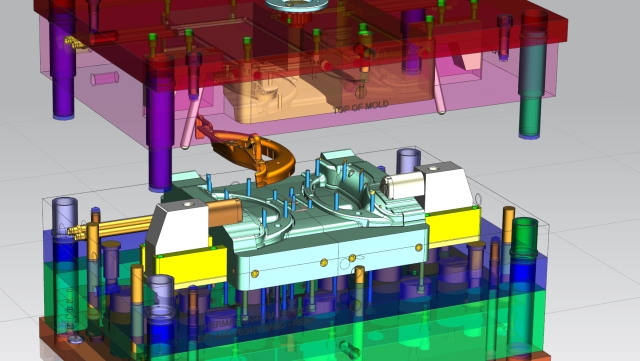To understand the rise of motion simulation in the tooling industry, it’s important to understand the barriers that previously slowed down its adoption and why they went away. These barriers were a set of industry perceptions that basically boiled down to five key areas:
- 1) Motion simulation software is complicated and expensive
2) It takes a CAE expert to perform simulation studies
3) It takes considerable time and effort to perform these studies
4) The time and cost of motion simulation studies can only be justified for the most complex and expensive tools.
5) It’s best to outsource motion simulation whenever a bona fide need for it arises
To be fair, if a company was only looking for critical issues like hard collisions or basic design flaws, it might have once been tough to justify the use of motion simulation, especially if the company believed that full-blown CAE solutions and experts were the only way to make it happen.
But if these assumptions are still true, why are so many tooling companies and auto suppliers adopting motion simulation solutions for everyday design tasks? On top of that, why are many CAD designers performing motion simulation and analysis on every tool design, not just the complex ones?
The Shift
Based on our 15 years of industry experience and hundreds of customers, we can say this shift is happening for the following reasons:
- 1) Increasing ease-of-use of motion simulation solutions
2) Decreasing cost of motion simulation solutions
3) The use of motion simulation earlier in the product design phase
Because motion simulation has become so easy to implement and use that the most common barriers to its adoption are disappearing. The use of streamlined commands and industry-specific terms combined with reduced cost has completely changed the ROI calculation for this software. Because of these improvements, we’re now seeing designers reduce their design validation times from two hours to fifteen minutes.
Employees performing robust motion simulation no longer require deep CAE experience. Since designers can easily perform motion simulation and analysis in less than half an hour, they have time not only to validate designs, but to continuously optimize them. They can also save significant amounts of time in their design process by performing motion simulation and collision checking on every tool at the earliest stages of their concept design.
In addition to these benefits, companies can also use motion simulation tools to provide visually appealing product concepts to customers and offer enhanced training materials to employees learning the fundamentals of tool design.
Next Steps
At Longterm Technology Services, we’ve worked closely with the tooling industry for 15 years to develop our Dynmik Design solutions, which over the past decade have democratize motion simulation and made it commonplace among tooling companies. Every year, these companies are performing motion simulation earlier and earlier in their design and engineering processes, saving time and money while increasing the quality of their products.
To learn more, please don’t hesitate to reach out to us today to have a conversation about your current goals and how motion simulation might help you fulfill them.



